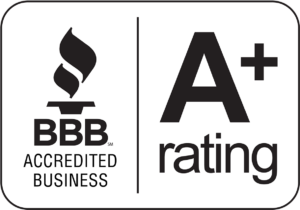We have all experienced a job change at some point in our life and, in most cases, you are on your own to make sure that all your ducks are in a row as you leave. This transition can often be stressful due to unexpected and/or unforeseen circumstances (i.e. a career change, moving to a new city or state, getting laid-off or terminated, retirement, etc.) that can make the process a little more chaotic. Sadly, this chaos often leads to important items being missed or put on the backburner, the 401k savings account being one of the main casualties.
You may not realize the exciting opportunities you have at your disposal now that those 401k funds are not tied down to your previous employer’s plan. Below are some Q & A to help you understand some of your options so you don’t leave those potential savings behind:
Can you keep it in the original Account?
Typically, if your account balance exceeds a certain threshold, the 401k plan will allow you to keep your account open. You may think this option is a no-brainer, however, there are more drawbacks than benefits to leaving your retirement funds parked here indefinitely.
- You can no longer make contributions to the 401k account.
- Administrative fees are typically higher to maintain the account.
- Your investment options are limited to what is offered within the original plan.
Inevitably, the inability to contribute and manage investment options leads many people to forget about the account. This defeats the purpose of building a retirement account.
Does your new employer offer a plan? If so, do they participate in a company match?
Not all employers offer a 401k plan, and if they do, there is no requirement for them to offer a company match. If they do not offer a company match, then the benefit to participating in that plan is pretty minimal given the higher administration fees for limited investment options.
Are there other retirement account options available?
Instead of settling for the next 401k plan or standard IRA account, you could transfer your funds into a Self-Directed IRA via rollover and invest in alternative assets (i.e. real estate, precious metals, digital currency, the possibilities are endless).
Roll-overs or transfers from a 401k to a Traditional Self-Directed IRA, is a non-taxable event. You also have the option to transfer and convert your pre-tax 401k funds to an after-tax Roth IRA. There are tax consequences associated with a Roth conversion, so it is important to discuss the implications with a tax professional prior to engaging in this type of transfer. If you would like to learn more about when would be a good time to consider a Roth conversion, you can Click Here to download our FREE whitepaper “Roth IRAs: It Doesn’t Have to be a Young Person’s Game”.
What are the benefits of a Self-Directed IRA?
While the initial benefit of a Self-Directed IRA is the tax-sheltered returns (dependent on the type of account), the primary benefit is that you have complete control over selecting and directing the investments in your retirement account. You have the ability to select investments that you may understand better than stocks, bonds, and mutual funds. Diversifying your portfolio with alternative investments can also help create a balance of assets that can be pivotal during market fluctuations.
Another attribute that some alternative assets possess that you lack with stock shares is capital preservation. For example, even during market fluctuations, real estate and precious metals still retain value, while if the business your stock shares are in goes bankrupt, you are at risk of losing your entire investment. Alternative investments have also been known to produce historically higher returns.
Can you have a 401k and an IRA account?
Yes, you can manage multiple retirement accounts. Depending on your tax bracket, if you have a 401k account and a Self-Directed IRA account (Roth or Traditional) you can max-out your contributions to both of your retirement accounts. For 2021, that is $19,000 in the 401k and $6,000 in the IRA. This creates a unique opportunity to diversify your overall retirement portfolio with both publicly traded assets and alternative assets. This would also allow you to still take advantage of a 401k match if that is an option.
Can you have multiple IRA accounts?
You can, however, your contributions must still meet IRS guidelines. For example, if you have a Traditional IRA account for publicly traded assets and a Traditional IRA account for alternative assets (the Self-Directed IRA), then between the two accounts you can only contribute the maximum amount, which is $6,000 for 2021. This means that you can split the contribution between the two accounts to the sum of the maximum amount or choose one account to make a full contribution that year.
One strategy that many investors take advantage of is their ability to roll-over funds between these accounts. This gives investors the flexibility to adjust with the market and deploy their retirement funds where they see fit, either in publicly traded or alternative assets.
As you can see, an old 401k is not the chore that you think you should be dreading, it is an opportunity for greater possibilities to accelerate your retirement savings! If you are interested in opening a Self-Directed IRA account to elevate your portfolio, you can apply online or Click Here to schedule a no obligation consultation to get your questions answered. We look forward to helping you put your retirement funds back to work.


